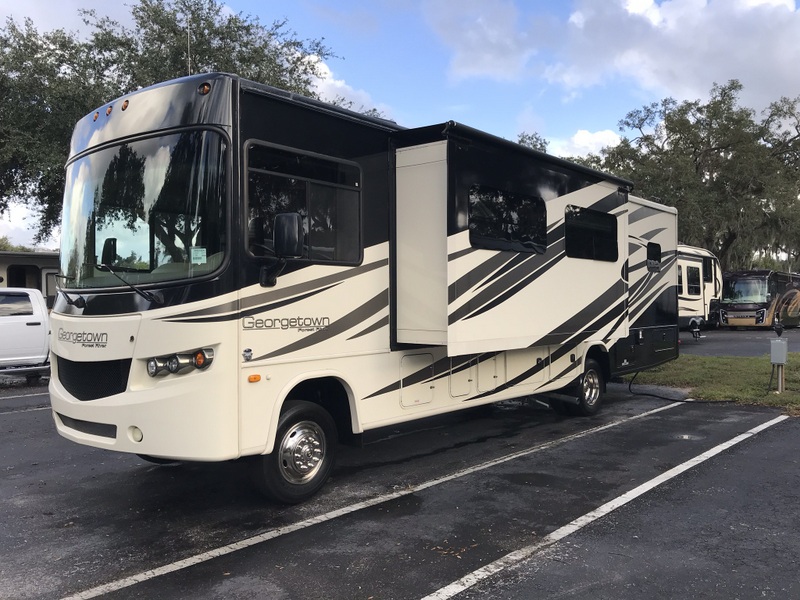Our 2015 Forest River Georgetown has two 13,500 BTU Dometic
roof top A/C units. We bought this RV used in 2018, it only had 10K
on the odometer. As with my previous RVs, we keep it plugged in, with
the A/C running all year. Very hot and humid in Florida. This
environment will destroy the interior of RVs that are just parked with no climate control.
Our last RV was a 2007 Rockwood travel trailer. Actually got it late
2006. Kept it plugged in for 13 years, and the interior has held up
well. Sold it to our niece. So it was unusual that our
RV A/C died after 5 years.
It symptoms were an increased buzzing
noise, and overall lack of cooling. Over the course of the year, it
started short cycling. Would cool for a few minutes, then the
compressor would disengage for a few minutes, then repeat. I had
pulled the cover, checked the run capacitor (actually measured it using the
meter linked below), verified
no leaks, and even replaced the thermal switch. But none had an
effect. It finally got to the point the compressor was too hot to
touch after just a few minutes of running. It burned the wires off the
top of the compressor!
I've read a number of
posts on various forums about people having issues with Dometic A/C units.
Our travel trailer has a Dometic too, so maybe there was a certain year of
duds, don't know. Either way, I bought the exact same unit. |

Removing the old unit was fairly straightforward. Disconnect power,
remove the cover from the ceiling inside the RV, and remove the 4 long
mounting screws. There are one or two Molex type connectors that need
to be unplugged from the control box - seen in the next picture. To
remove the unit from the roof, I went up top, and lifted one corner slowly
until the seal released from the roof. The roof was scrubbed with
Simple Green to make a clean surface for the new gasket to seal against. |

This is the control box that stays in place. This makes replacement
MUCH easier! If you look close, you can see the two connectors on the
back of the box, where the top of the A/C unit plugs into. One of the
connectors goes to the optional heatstrip, which mine has. |

With the box, the A/C unit weighs 75 lbs or so. The top of my RV is
12'. I'm years past the era of putting it on my back, and dragging up
the vertical ladder on the back of the RV! Instead, I have a
commercial grade extension ladder (350# rating). I put the base of the
ladder in the bed of the truck, and the top on the RV. The base
couldn't move as it was against the back of the bed, and the top was tied to
the rear A/C unit, in case it tried to slide left/right. |

Overview of the operation. This actually went well. I pushed the
unit up the incline, and carefully transitioned it to the roof. I left
it in the cardboard box, and slid it across the fiberglass roof until it was
close to where it needed to be. |

The new unit was set in place. No sealant is put on the roof or the
gasket. The closed cell foam doesn't need it, and will greatly
increase your frustration if the work every has to be repeated. |

From inside the RV, final alignment of the unit can be done. Those 4
long bolts need to align with the 14" square hole. By reaching up
through the hole, the unit can be nudged an inch or two in any direction.
When you can clearly see all the holes, you're there. Put the metal
mounting place against the ceiling, and gently run all 4 bolts in place.
I slowly tightened each corner until I felt about a 1/4" of compression of
the foam seal. Pay attention to where foil duct tape had been applied
previously to seal up unwanted air paths. I duplicated what had been
done, put all the parts back like before, plugged it in, gave it a test. |


